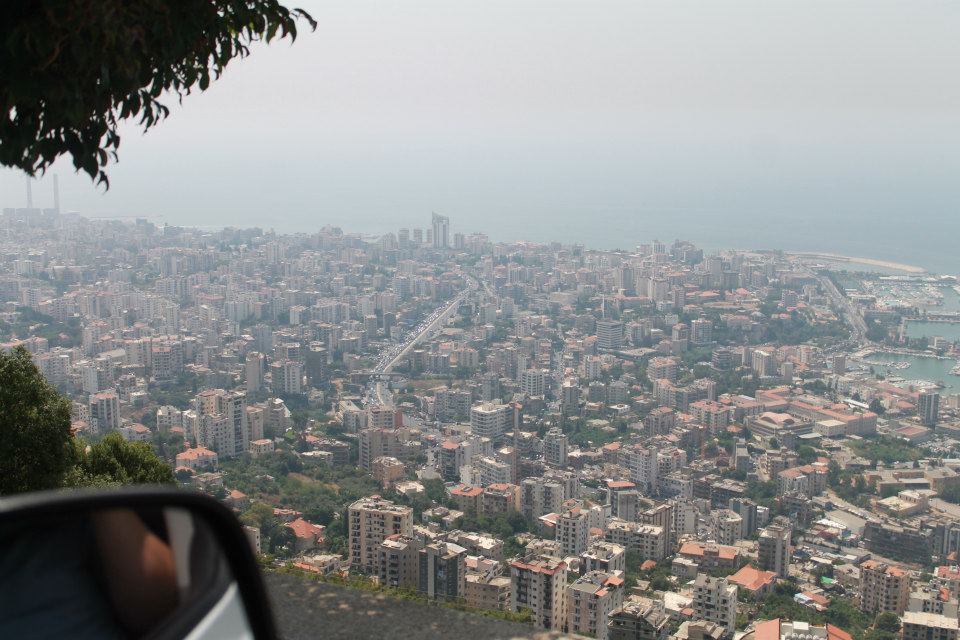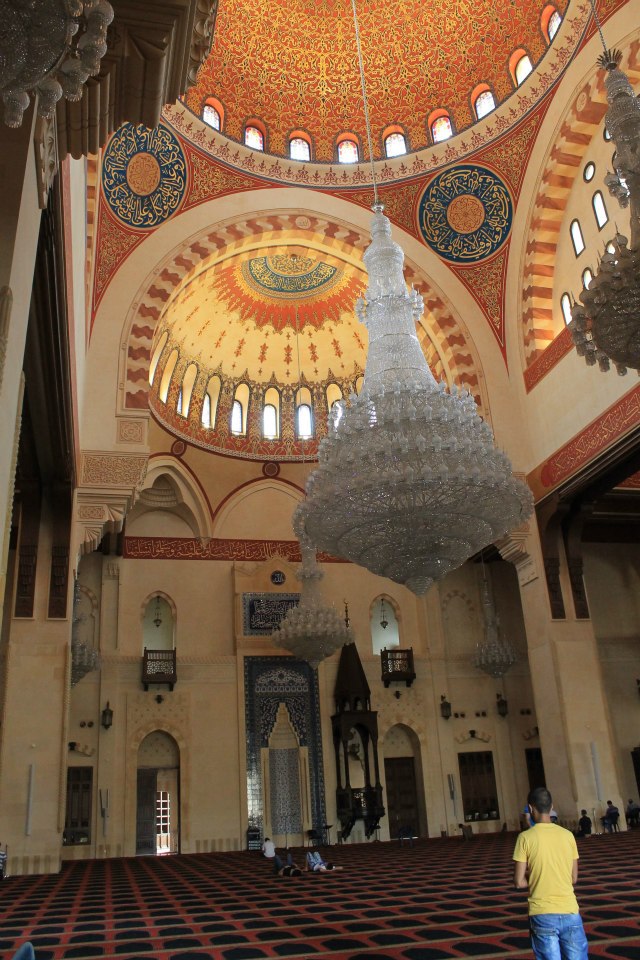Before leaving for Lebanon, I'd get the stink eye from more than just a few friends when they found out I was going there, not just by myself, but with my parents and pre-teen daughter to boot. “Why would you want to go to that war-torn hellhole, are you mad? They kill Americans for sport there!” were the most common gripes. Not only did I shrug them off, but I was armed with facts, whereas they were just going off of news reports from 20 years ago.
Now, mind you, the US State Department and the UK Foreign and Commonwealth Office recommend against travel to some areas of the country (mainly the southern part of the country and the Syrian border areas), but the rest of the country is absolutely amazing, with some of the warmest, most gracious folks you'll ever meet, who are genuinely glad you are visiting their country.
It all starts when you first arrive. If you are fortunate enough to fly on the National airline, MEA (Middle East Airlines – Air Liban), from any number of European, African, or Middle East departure points, you are in for a treat. Brand new airplanes, incredibly attentive staff, and a seriously comfortable ride.
Upon arrival at Beirut's Rafic Hariri International Airport, you come to the Customs and Immigration line where, if you are a US Citizen, you get the warmest, most genuine welcome from the government official, and an extremely thorough check of your travel credentials. It might have taken a little longer than Customs at JFK, but after a quick look around, I could see that a Syrian Air flight has just landed and the majority of Customs officials were in the Political Asylum office processing their neighbors' due to the hostilities going on there. Besides, we were in no hurry, even at that extremely late hour.
After exiting the arrivals hall, we were met by our guide, Pierre, and taken to our hotel. By the time we got checked in and settled into our rooms, it was well past 1AM. Both parents and daughter were zombies at this point and we passed out. But enough of the play by play, let's get to the goodies of my 7-day stay.
As I said before, what strikes me the most about Lebanon is the people. From the night we arrived, until the morning we left, I will never forget just how kind and friendly they were, despite what the US Lamestream media says, Lebanese people almost have a permanent grin on their face from everything that's going on in their country, and they can't wait to share it with you!
A little history about Lebanon (and Beirut in particular) though. Beirut's history goes back at least 5,000 years, but we'll just focus on the here and now. Once known as the “Paris of the Middle East” Beirut was a jet setter's paradise, until a very bloody and divisive Civil War tore not only Beirut apart, but the country as well. The war raged from 1975 to 1990, with headline grabbing assassinations, bombing, and airliner hijackings becoming commonplace.
After the fighting subsided, the Lebanese people began rebuilding the country with a fervor unmatched since the Renaissance (and it is still going on, as visible in the Gemmayzeh, Corniche Beirut, and Hamra districts). As of 2012, the majority of tourists are returning expatriates, many of whom reside in Western Countries. I certainly hope with additional help and media from blogs such as FL310, and from other tourist groups, the tide will shift to more Foreign tourism.
Let's start off in the Hamra district, where our hotel was. Straddling the longest side of the American University of Beirut, this district is known throughout the West as one of the top 3 hotspots in Beirut with its cobblestone street connecting central Beirut with the Coastal Raouche areas. Hamra is a large concentration of shops, late-night fast food joints, hotels, streetside vendors, sidewalk cafes, REAL travel agencies, newspaper kiosks, and a booming nightlife spurred by the AUB students. I took my daughter and my dad (Mom was busy at the hotel spa) and we meandered through the shops, people watched from the sidewalk cafe, and visited several travel agencies and airline offices. It was obvious construction was still going on in a large part of town, but, the progress was amazing to watch and to hear the locals explain in detail what was going on was a breath of fresh air.
For any of you that are fans of Anthony Bourdain's No Reservations, you may recall he visited Beirut and spent some time in the Gemmayzeh District, and at a restaurant called Le Chef. Pierre, our guide, took us there for lunch after we had spent the morning tooling around Gemmayzeh and the Corniche districts, where the jet setters of today spend their time. In these areas, nee in all of Lebanon, the car of choice is a Mercedes SUV, with the occasional Cadillac thrown in for sport. Corniche and Gemmayzeh are the hotspots for nightlife with all night beach parties on the Corniche, to some of the most expensive nightclubs on Earth in Gemmayzeh. You'll find the most beautiful people from all corners of the Earth at these soirees, but you will spend quite a chunk of change getting in ($200 was the cover charge at one spot I was taken to!), not to mention getting yourself a drink...
The next few days Pierre took us outside the city, first to the Jeita Grotto, some of the most amazing limestone caves I've ever seen. The whole grotto consists of two interconnected karstic limestone caves, spanning almost 9 kilometers (or 5 ½ miles). Aside from being one of the Lebanese national symbols, the Grotto was a finalist in the New 7 Wonders of the World competition in 2011. The caves were only 11 miles from Beirut, but the amount of traffic on the roads away from the city at that time in the morning rival Los Angeles or Boston for lung-clogging, road-rage infested drivers.
From there we spent our time as bonafide jet setters in Jounieh, a seaside trendsetters resort town north of Beirut. Known for its seaside resorts and bustling nightlife, not to mention the old stone souks, ferry port, yacht docks and teleferique (cable car) up the mountain to the shrine of Our Lady of Lebanon in Harissa, where some of the most beautiful Cedar Trees (the national symbol of Lebanon) can be seen. After an amazing supper of freshly caught fish by the shore, we made it back to the hotel late that night and had to pack for our early morning flight back to Europe.
I honestly can't wait to go back to Beirut (and to Lebanon in general), this time either on my own, or with friends so I can change their hard headed minds!
Well that's it for this week, stay tuned!
This mosque was under construction when Prime Minister Rafic Hariri was killed, and was named in his honor (with his memorial grave adjacent to the mosque) upon completion.
Looking down from Harissa to Jounieh and the Mediterranean Sea.
The pedestrian plaza in Gemmayzeh, with the Lebanese Parliament to one side.
An ancient Roman bridge in the deep valley on the way to Jeita.
Yep, that's the way to Jeita and the world famous Grotto.
You have to love just how beautifully laid out most areas of Beirut are.
The infamous Pigeon Rocks of the Corniche Beirut.
Jetsetters and their water toys in Jounieh.
Good morning Beirut!
Found on the higher level of the Grotto, from ancient Roman times.
Looking South from the airport to the refuge camps of South Beirut.
Guarding the entrance to the lower level of the Grotto.
Roman ruins unearthed in Central Beirut.
The inside of the Mosque. Simple, yet classy.
I want to say this is the Greek Catholic Church, but I could be wrong.
Welcome to Beirut!
The Shrine of Our Lady of Lebanon in Harissa.
Our flight from Beirut to Larnaca, Cyprus, after our stay in Lebanon.
The immortal Lebanese flag and the Cedar.
Almost everywhere in the Gemmayzeh district you will find either Ancient greek or Roman ruins.
The Lebanese Parliament.
Looking up to the Shrine.
The Opera House, being rebuilt.
This mosque was under construction when Prime Minister Rafic Hariri was killed, and was named in his honor (with his memorial grave adjacent to the mosque) upon completion.
Looking down from Harissa to Jounieh and the Mediterranean Sea.
The pedestrian plaza in Gemmayzeh, with the Lebanese Parliament to one side.
An ancient Roman bridge in the deep valley on the way to Jeita.
Yep, that's the way to Jeita and the world famous Grotto.
You have to love just how beautifully laid out most areas of Beirut are.
The infamous Pigeon Rocks of the Corniche Beirut.
Jetsetters and their water toys in Jounieh.
Good morning Beirut!
Found on the higher level of the Grotto, from ancient Roman times.
Looking South from the airport to the refuge camps of South Beirut.
Guarding the entrance to the lower level of the Grotto.
Roman ruins unearthed in Central Beirut.
The inside of the Mosque. Simple, yet classy.
I want to say this is the Greek Catholic Church, but I could be wrong.
Welcome to Beirut!
The Shrine of Our Lady of Lebanon in Harissa.
Our flight from Beirut to Larnaca, Cyprus, after our stay in Lebanon.
The immortal Lebanese flag and the Cedar.
Almost everywhere in the Gemmayzeh district you will find either Ancient greek or Roman ruins.
The Lebanese Parliament.
Looking up to the Shrine.
The Opera House, being rebuilt.
--George























No comments:
Post a Comment